Arcam irDAC ll DAC Streamer
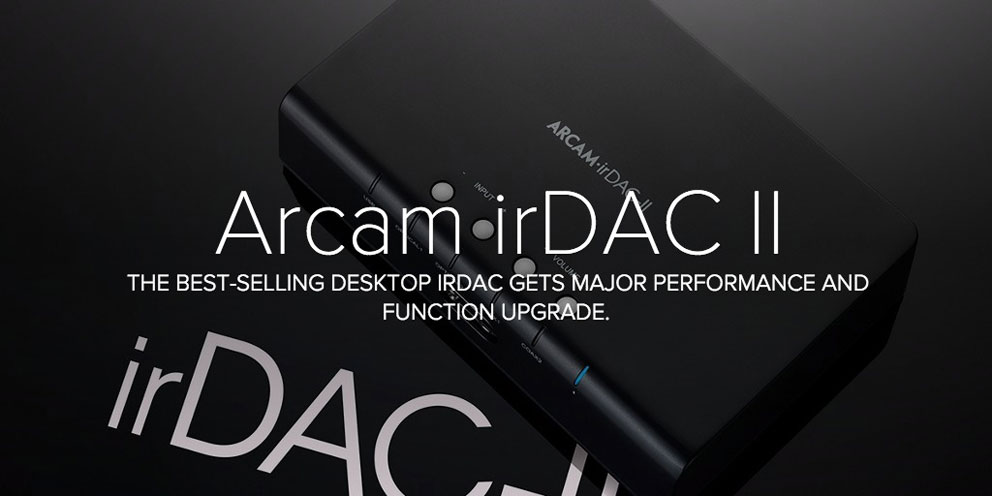
 Arcam, headquartered in Cambridge, UK, one of the long-established and respected pioneers in the Hi-Fi industry, has been building world-class products for decades, with 2016 their 40th Anniversary Year. This AV engineering company knows a thing or two about digital audio, having introduced the world’s first external DAC in 1987. Arcam’s approach? Get out of the way of the music, by utilizing an ultra-low-noise and ultra-low-distortion approach, virtually eliminating every possible area of cross distortion between digital and analog.
Arcam, headquartered in Cambridge, UK, one of the long-established and respected pioneers in the Hi-Fi industry, has been building world-class products for decades, with 2016 their 40th Anniversary Year. This AV engineering company knows a thing or two about digital audio, having introduced the world’s first external DAC in 1987. Arcam’s approach? Get out of the way of the music, by utilizing an ultra-low-noise and ultra-low-distortion approach, virtually eliminating every possible area of cross distortion between digital and analog.
The new Arcam irDAC ll is like sitting down with an old friend – familiar, because I reviewed the original irDAC last year and enjoyed it’s features and laid back sound. After all, Arcam’s products are built for musical natural sound and long-term non-fatiguing listening – they don’t build equipment to impress with one quick listen. I’ve grown to expect great things from Arcam and looked forward to living a while with this irDAC ll update.

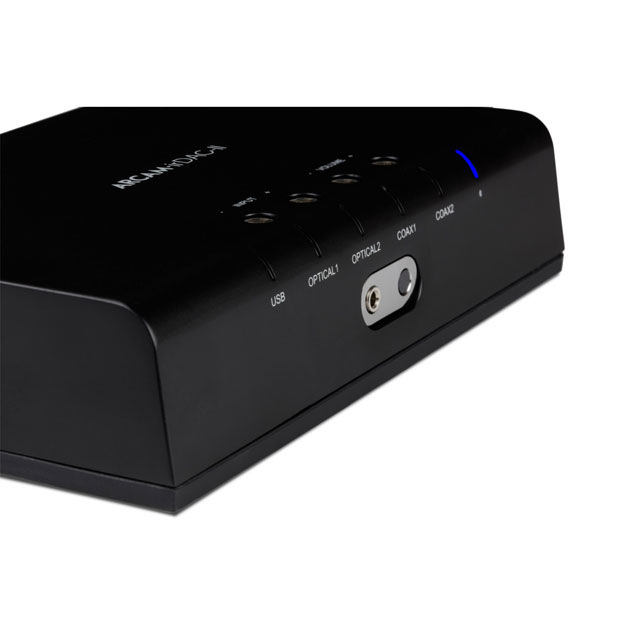
Inside it’s seductively-coated matte cast-aluminum shell, the ARCAM irDAC ll includes new circuitry, the ESS ES9016 Sabre DAC chip and a headphone amplifier. The addition of a Bluetooth aptX receiver (with an included antennae mountable on the rear panel) and a front-mounted 3.5mm headphone jack are the noted add-ons to its exterior. The irDAC ll comes with multiple power adapters for global use, as did the original irDAC, as well as cables to get you quickly up and running.
The Arcam irDAC ll sports some major internal upgrades. The ESS9016 Sabre Ultra DAC, a high-performance audio D/A converter that’s making the rounds in some great sounding components, is but one good-sounding addition. There are also new internal circuits and total harmonic distortion is rated 0.0007% and signal to noise ratio (A:weighted) is 117db (24:bit), both impressive results.
A little technical talk from the experts at Arcam: “The incoming 12V supply has multiple capacitive filtering applied, designed to suppress a variety of frequencies, followed by a common mode choke. To further isolate internal sections of the product from the incoming supply, this is then locally sub-regulated to separate +/-9V supplies for the headphone output (which is further locally sub regulated to +/-5V for the volume control & filter), 5V specifically for the DAC, 3v for the Bluetooth and a 3v supply for the rest of the logic.’ Further, ‘The analogue filter is DC servo’d (not capacitively coupled) as this approach is much more faithful in reproducing lower frequencies.”
The Arcam is a true high resolution component, supporting both 16:bit and 24:bit depths and adding support for DSD128. It’s asynchronous USB input can support rates from 32kHz up to 384kHz, the optical inputs support rates up to 96kHz and the coaxial rates support up to 192kHz. The Arcam engineering team has applied their 30 year history producing DAC’s to produce a signal that is, in their words, “almost jitter free.” Obsession with jitter is a very good thing.
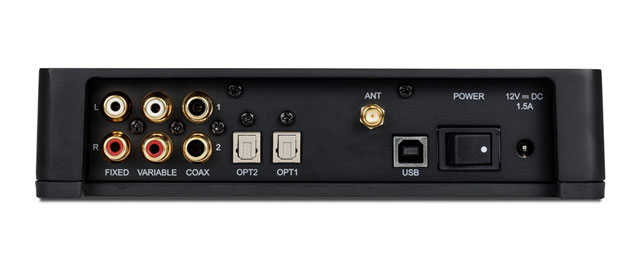
Arcam’s irDAC ll offers the same rear panel configuration of the original AirDAC along with user installable antenna for the wireless Bluetooth receiver. There are pairs of fixed and variable and two coax (SPIDF) jacks, all gold-plated outputs, as well as a pair of optical connections and an asynchronous USB input for your computer. Filling out the rear panel are the power on/off and an input for it’s smallish AC power adapter. The only thing missing was the USB A input for corded play and charging devices – more on this later.
I’ve been using the Arcam irDAC ll with the lovely-sounding Parasound Halo 2.1 integrated, fully cabled with Oyaide Audio LTD cables – their Tunami Terzo RR V2 interconnects, Tunami GPX-R V2 power cables, with Tunami Nigo V2 speaker cables connecting my Eminent Technology LFT-8b’s to the Halo 2.1. There’s a synergy here that’s obvious from the first note played – this paring presents a musicality that’s down right enjoyable and foot-tapping as I played one rip/download after another. Clement Perry himself commented quite positively on this synergy after I formed my own impressions – I heartily agree with his opinion.
I used the Arcam with my MacBook Pro and Amarra HiFi software and, save a few situations where a reboot, log out/log in was required for the Mac to see the irDAC ll, I had little trouble with signal routing. At start ups, the MBP would, at times, play through the internal speakers until I launched the Amarra prefs to select the irDAC ll… a duty repeating fairly often.
The included IR remote is the same form factor as the original irDAC’s save the addition of a Bluetooth button. As with the original there are buttons for volume up/down, USB, Coax1 and 2. BT and Opt1 and 2 and mute, along with navigational buttons – play, stop, last track, next track and pause. It has nice heft for being plastic.
Listening
 Miles Davis “Quiet Nights” (Columbia 1963), a lesser known date with Gil Evans and here listened to as a CD rip, has been a favorite since I found it in it’s original 6 Eyes vinyl back in the 1990’s. Admittedly, I tended to move on from the first side to something else most often, so the side 2 track The Time of the Barracudas was a surprise when CP played it for me on his system. Sure, I felt like a goof not recalling it, but I’m getting to know and love that side now! What a treat it is through the Arcam.
Miles Davis “Quiet Nights” (Columbia 1963), a lesser known date with Gil Evans and here listened to as a CD rip, has been a favorite since I found it in it’s original 6 Eyes vinyl back in the 1990’s. Admittedly, I tended to move on from the first side to something else most often, so the side 2 track The Time of the Barracudas was a surprise when CP played it for me on his system. Sure, I felt like a goof not recalling it, but I’m getting to know and love that side now! What a treat it is through the Arcam.
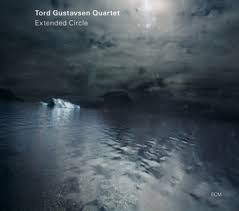 The Tord Gustavsen Quartet’s “Extended Circle” (ECM 2014) listened to as a rip from the CD, delivers a very unit playing at peak telepathic power. With The Gift, things get dreamy and near mystical – I found myself drifting into the music, with seductive brushwork (no ‘bacon frying’ brush sound here) full and round, painting textures riding and gliding across skins, caressing cymbals. A wonderful image with a nice depth to the soundstage. The track ‘Staying There’ shows this very tight group mastering the form with plunky and woody bass locked in a tight groove with punctuated percussive delivery and a sax with more breathe than bite. Entrance Variation is a wonderfully spatial track and my favorite here for demo. The sax sounds very real, with great textures delivered by the bowed bass and percussion.
The Tord Gustavsen Quartet’s “Extended Circle” (ECM 2014) listened to as a rip from the CD, delivers a very unit playing at peak telepathic power. With The Gift, things get dreamy and near mystical – I found myself drifting into the music, with seductive brushwork (no ‘bacon frying’ brush sound here) full and round, painting textures riding and gliding across skins, caressing cymbals. A wonderful image with a nice depth to the soundstage. The track ‘Staying There’ shows this very tight group mastering the form with plunky and woody bass locked in a tight groove with punctuated percussive delivery and a sax with more breathe than bite. Entrance Variation is a wonderfully spatial track and my favorite here for demo. The sax sounds very real, with great textures delivered by the bowed bass and percussion.
 Mark Isham’s “Blue Sun” (Columbia 1995) presents Isham in a decidedly strong cool jazz mode after years of Windham Hill and soundtrack efforts. Wonderfully recorded with nice soundstage and imaging, on That Beautiful Sadness, Isham’s horn is round and full, with a honey tone, surrounded by full, bold bass and crisp percussion taps and strikes. This track presents the horns well, with a sax that is warm and textural and a trumpet that is near liquid in tone. Through the Arcam, this disk is very easy to listen to.
Mark Isham’s “Blue Sun” (Columbia 1995) presents Isham in a decidedly strong cool jazz mode after years of Windham Hill and soundtrack efforts. Wonderfully recorded with nice soundstage and imaging, on That Beautiful Sadness, Isham’s horn is round and full, with a honey tone, surrounded by full, bold bass and crisp percussion taps and strikes. This track presents the horns well, with a sax that is warm and textural and a trumpet that is near liquid in tone. Through the Arcam, this disk is very easy to listen to.
John Pizzarelli’s Midnight McCartney (Concord Records 2015) provides great material for the irDAC ll. This laid back effort bring Pizzarelli and company to your ear in top form, with bold solid bass, easy breathy vocals, a very natural guitar tone and warm caressing strings. The recording exudes a warmth, ease and effortlessness that can be listened to for hours. In the hands of the Arcam, this intimate jazz interpretation of McCartney’s pop tunes shines.
Bluetooth
The Arcam irDAC ll offers wireless streaming via Bluetooth, supporting SBC, AAC, aptX, aptX:LL protocols, performing quite well with my iPad Air as the source. I found I could walk the length of the loft and even into a room away from the system and the signal didn’t drop out. I was less fortunate when using my aging iPhone 4 with it’s older iOS 7.1.2. The Arcam played via Bluetooth well with no breakup when kept within a average 10 foot range of the irDAC ll however, at 13 feet or farther, the signal dropped out a bit. I couldn’t walk a round the loft with my phone in my pocket. Being the forgetful type, I had to remember to retrieve my phone after play. Bluetooth came in handy during listening sessions with friends who wanted to play from their phones and other devices. The sound was enjoyable for casual listening.
 Through Bluetooth, Andy Bey Tuesday In Chinatown, (2001 N2K Encoded Music) played via a Spotify stream from the MBP. was thoroughly enjoyable. His beautiful, deep, dense baritone remains captivating, with his unique brand of phrasing. Bey remains a treasure at any resolution! Paul Simon’s Stranger To Stranger was an equally pleasant experience, with surprising bass and clarity for a low-res source… love the use of Chuck Close’s art for the cover.
Through Bluetooth, Andy Bey Tuesday In Chinatown, (2001 N2K Encoded Music) played via a Spotify stream from the MBP. was thoroughly enjoyable. His beautiful, deep, dense baritone remains captivating, with his unique brand of phrasing. Bey remains a treasure at any resolution! Paul Simon’s Stranger To Stranger was an equally pleasant experience, with surprising bass and clarity for a low-res source… love the use of Chuck Close’s art for the cover.
Sadly, Arcam removed the USB A input present on the original irDAC’s rear panel in favor of adding the Bluetooth receiver to this newer model. Bluetooth was admittedly quite convenient once a device was paired… in the case of the iPad Air, pairing took a few times to work but, once connected, worked well. As convenient as Bluetooth is, I generally prefer tethered play from my devices. The USB input also charged devices, which I really enjoyed and used often.
Headphones
Arcam notes that the irDAC ll’s headphone stage was taken from their flagship A49 amplifier and that it’s capable of driving a wide variety of headphones from 30Ω to power-hungry 600Ω loads. I used my Sennheiser HD650’s for listening through the irDAC it’s front-mounted 3.5mm headphone input – Sennheiser headphones are known to be laid-back for long listening sessions and the Arcam provided the same warmth and ease with these phones, though it was a touch bright before fully broken in. It did sound good, with enough volume, air, warmth and bass to make any prolonged listening session quite comfortable.
Comparison
I used both the Arcam and the Parasound Halo 2.1’s internal DAC, for comparison’s sake during my time with the Arcam. Both present the digital source quite well, with good bass, musical warmth and tight imaging – and the soundstage from both the irDAC ll and the Parasound Halo’s internal DAC were quite expansive.
 For the heck of it, I decided to compare the Arcam irDAC ll to the internal DAC of the Parasound Halo 2.1 integrated since both were on hand. I do acknowledge that this comparison is a bit unorthodox, with one being internal and the other being external. I selected Sam Yahel’s From Sun To Sun (Origin Records 2011) for the event – is a wonderfully recorded and transparent CD, and one of my favorites.
For the heck of it, I decided to compare the Arcam irDAC ll to the internal DAC of the Parasound Halo 2.1 integrated since both were on hand. I do acknowledge that this comparison is a bit unorthodox, with one being internal and the other being external. I selected Sam Yahel’s From Sun To Sun (Origin Records 2011) for the event – is a wonderfully recorded and transparent CD, and one of my favorites.
Both the Arcam and Parasound DAC’s presented great dynamics, good solid bass and nice textures. Imaging was spot on and each DAC threw a very nice soundstage. The Arcam produced nice round cymbals with a pleasant snap to snare taps and other percussive sounds, though it did lack a bit of the sparkle and transparency of the Parasound Halo’s internal. The Halo DAC’s soundstage was a bit deeper and micro dynamics enliven with more sparkle and interest, with cymbal decay noticeably longer. That said, it is worth remembering that the laid-back nature of the Arcam irDAC is built-in for long term listening.
Wrap up
There’s a lot to like in the new irDAC ll – it appears competitively priced at $495.00. It’s impressive performance offers worthwhile competition to other feature packed DACs out there. The irDAC ll’s sound is somewhat laid back, designed for long-term fatigue free listening. Though it may lack a touch of oomph when compared to brighter snappier sounding units, the Arcam irDAC ll a winner in my book. While I was less than happy to see the USB jack removed, but newer devices paired and worked well with the newer there are enough features (and new ones added) to keep a demanding digital user content.

greg voth
Specifications:
Arcam irDAC-II £495/$695.00
Arcam
The West Wing
Stirling House
Waterbeach
Cambridge CB25 9PB
UK
A&R Cambridge Ltd, Registered in England 2880174
Website: http://www.arcam.co.uk
Stereo Times Masthead
Publisher/Founder
Clement Perry
Editor
Dave Thomas
Senior Editors
Frank Alles, Mike Girardi, Russell Lichter, Terry London, Moreno Mitchell, Paul Szabady, Bill Wells, Mike Wright, and Stephen Yan,
Current Contributors
David Abramson, Tim Barrall, Dave Allison, Ron Cook, Lewis Dardick, John Hoffman, Dan Secula, Don Shaulis, Greg Simmons, Eric Teh, Greg Voth, Richard Willie, Ed Van Winkle, Rob Dockery, Richard Doron, and Daveed Turek
Site Management Clement Perry
Ad Designer: Martin Perry


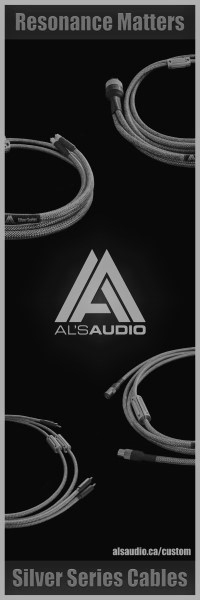

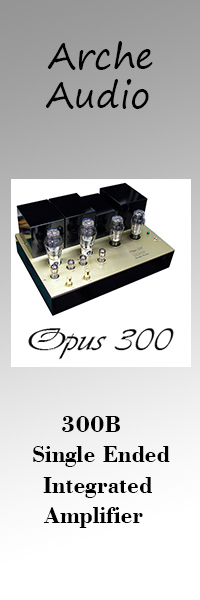
Be the first to comment on: Arcam irDAC ll DAC Streamer